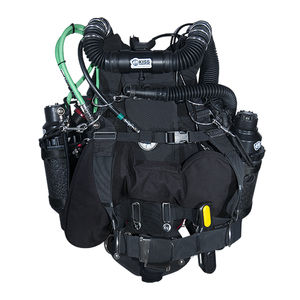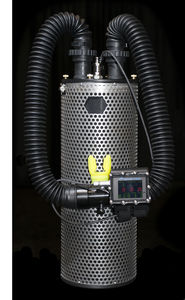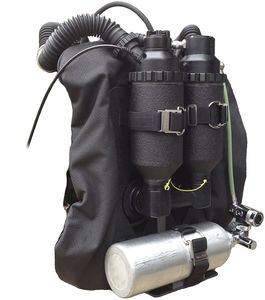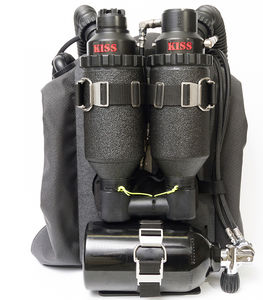
- Water sports
- Diving, Spearfishing
- Diving rebreather
- KISS Rebreathers
Semi-closed circuit diving rebreather GEM SCR
Add to favorites
Compare this product
fo_shop_gate_exact_title
Characteristics
- Options
- semi-closed circuit
Description
Semi-closed rebreather systems differ from their fully-closed counterparts in a number of significant ways.
Instead of requiring two gas sources (oxygen and a diluent), they use only one gas source, which is Nitrox mixes of 32 percent and above. Perhaps the best way to think of a semi-closed rebreather is as an efficient gas extender, which gives the diver the ability to extend the duration of a given gas supply by as much as a factor of three, compared to open circuit use. There are also the added benefits of breathing warm moist air, which helps reduce heat loss and dehydration, along with the reduction of bubble noise, which won’t scare off some of the wildlife.
Currently there are three types of semi-closed rebreathers on the market:
The first is the active-addition semi-closed rebreather's (SCR), which bleeds gas into the loop at a small but constant rate, so that gas is cycled slowly through whether the diver is breathing or not.
Newest on the scene is the electronically-controlled semi-closed rebreather (ESCR), which depends on electronics to decide when and how much new gas needs to be added to the loop to maintain life support for the diver.
Third is the passive-addition semi-closed rebreather (PASCR), which is a totally mechanical system that replenishes the loop with new gas at a rate that is keyed directly to the diver’s own metabolic rate. In the case of the KISS GEM, which is a passive-addition system, new gas is added to the loop at a ratio of approximately 3 to 1 – extending the duration of any cylinders gas supply by a factor of three.
Catalogs
No catalogs are available for this product.
See all of KISS Rebreathers‘s catalogs*Prices are pre-tax. They exclude delivery charges and customs duties and do not include additional charges for installation or activation options. Prices are indicative only and may vary by country, with changes to the cost of raw materials and exchange rates.







